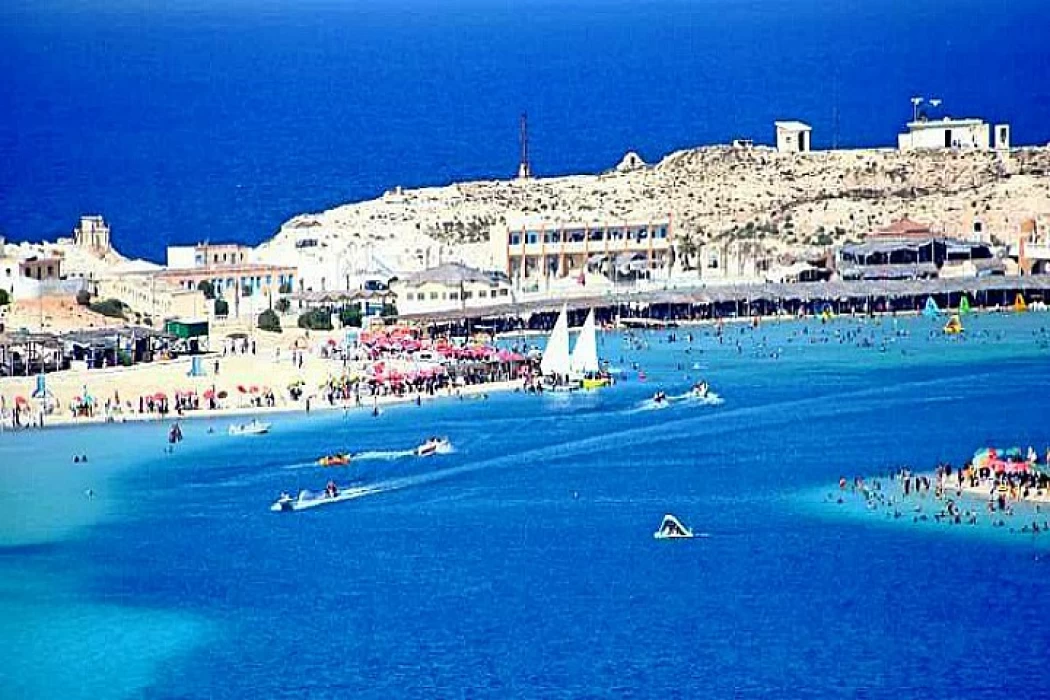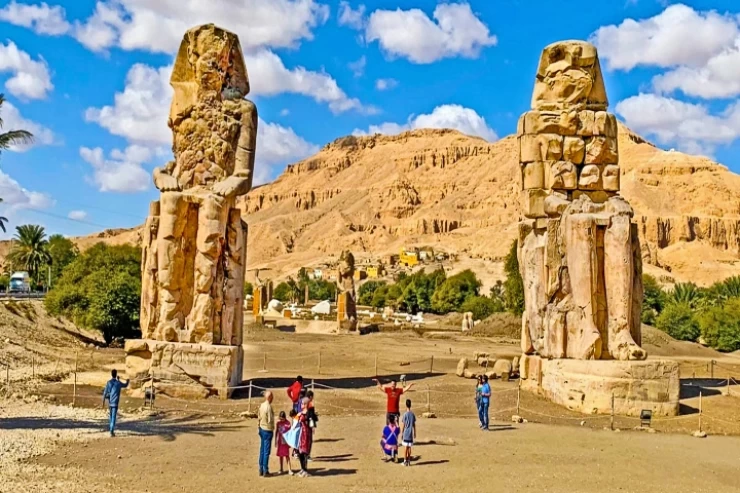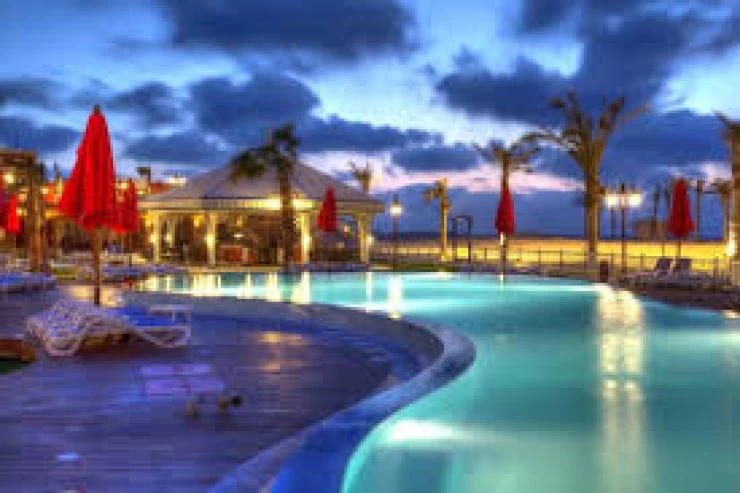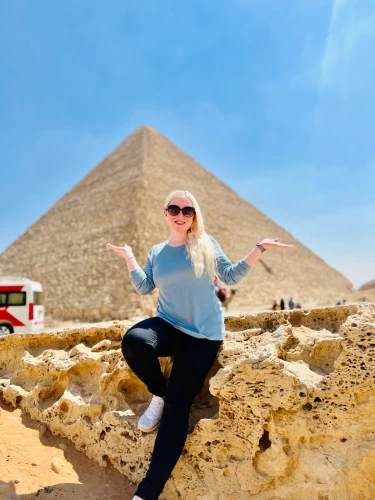
Roman-Era Tomb Uncovered in Marsa Matrouh
A Roman-era tomb in Marsa Matrouh has been uncovered during excavations at the Umm al-Rakham archaeological site in the Marsa Matrouh governorate (northern Egypt). This discovery is a significant addition to the historical attractions of Marsa Matrouh, a city included in many Egypt Travel Packages.
The city of Marsa Matrouh is located on the Mediterranean coast, 290 kilometers west of Alexandria and 524 kilometers from the Egyptian capital Cairo. Egypt Shore Excursions often include this region for travelers looking to explore the coastal beauty and ancient heritage of Egypt.
The discovery was made during excavations carried out by an Egyptian archaeological mission headed by Qutb Fawzy, head of the Central Department of Antiquities of the Sea Face and Sinai. It included two rock-cut tombs of the “Catacomb” style, known in the Roman era, with 29 burial sites, a number of glass jars, carved and decorated sacrificial tables, a statue of a man in a Roman robe, a ram statue, a bust of an unknown woman, and some bronze coins.
It also uncovered “a bathhouse complete with architectural elements, inside which were found reception halls, seating benches for bath users, bathing rooms, cisterns and water drainage places,” Dr. Ayman Ashmawy said. Egypt Day Tours often bring tourists to visit such newly uncovered sites, providing an immersive journey into Egypt’s ancient past.
Which were closed with limestone plugs,” he said. “The burial place of the owner of the tomb was closed by an imaginary door whose sides rested on two columns with relief carving, and in the center was represented by a double-sided door surmounted by a periodic frieze containing tooth decoration and a limestone offering table below it.”
The city of Marsa Matrouh includes a number of archaeological monuments, the most prominent of which is the Temple of Ramses II, discovered by archaeologist Labib Habash in 1942, in addition to the Cleopatra Baths area, which includes some archaeological mounds. According to the Egyptian State Information Service website, it was indicated “the presence of archaeological mounds and rock-cut tombs from the Greco-Roman era in the Sidi Barani area of Matrouh, and other archaeological tombs in Jebel Dakrour and Jebel al-Muta areas, and other ancient mounds that need excavations to reveal their secrets.
Located on the Mediterranean Coast of Egypt, Marsa Matrouh is a calm and beautiful holiday destination for those in need of clear blue waters and soft white sandy beaches away from the noise of the crowds that other tourist attractions come with. Famous for its pristine beauty, Marsa Matrouh has also ascended the ranks of Egypt’s well-kept secrets, where one can enjoy rest, history, and nature in equal measure.
It is said that in Egypt, the city of Marsa Matrouh has some of the best beaches. With its soft, fine grains of white sand and clear sky-blue water, it is no wonder why Cleopatra Beach, a beach named after the famous Egyptian Empress, occupies the first place in the list no one can dispute. They say this secretive area is the same place where Cleopatra would often go to take a dip. Agiba Beach is another popular place, which features cliffs that provide breathtaking sights of the expansive Mediterranean Sea as well as its several serene beaches that are ideal for relaxing.
The gentle, textured, and shallow waters of Almaza Bay suit children perfectly, while on the other hand, the nearby Rommel Beach, known for its World War II sandy beach, combines leisure with a touch of history. The tranquil atmosphere therefore makes Marsa Matrouh a perfect place for cultivation and relaxation at the same time.
However, present-day Marsa Matrouh is more than a beautiful coastal city. The city was once significant in the history of World War II, and tourists can visit the Rommel Museum, which used to be the hideout of German Field Marshal Erwin Rommel—referred to as the “Desert Fox." This museum gives an insight into the period of war and bears numerous war history fan collections.
Moreover, located a few kilometers from the city is El Alamein, the site of one of the most important battles of the Second World War. Here, too, travelers can find war memorials, museums, and cemeteries dedicated to the North African campaign and its valiant defenders.
Marsa Matrouh offers a different type of holiday from the rest of Egypt due to its warm and generous hospitality. The local markets are alive with sights, smells, and sounds, where one can find anything from authentic Egyptian art to exotic fish. Visitors can enjoy mouth-watering Mediterranean dishes fused with the local cuisine—grilled fish, delicious seafood tagines, and numerous kinds of scrumptious mezze are the must-tries.
If you wish to go beyond the obvious history and the tourist trail, a walk around the city will give you a view of mosques, small local eateries, and traditional marketplaces that depict the way of life of the residents of the seaside town.
For the bolder sea-goers, Marsa Matrouh provides a wide range of activities that involve nature and the outdoors. The perfect, calm waters of the coast attract many swimmers and snorkelers eager to discover the underwater life beneath. Away from the beach, there are coral reefs that can serve as a snorkeling haven.
For those who have an appreciation for the past as well as the great outdoors, a visit to Siwa Oasis—a roughly four-hour drive from Marsa Matrouh—should be high on the list. This oasis, which is located in a secluded desert, contains hot springs, old monuments, as well as the renowned Salt Lakes, which allow tourists to float due to the saturated concentration of salt inside. Adding a further depth of intrigue to the stop is the temple of the Oracle of Amun of Roman times which had traces of Alexander the Great himself visiting the temple.

















